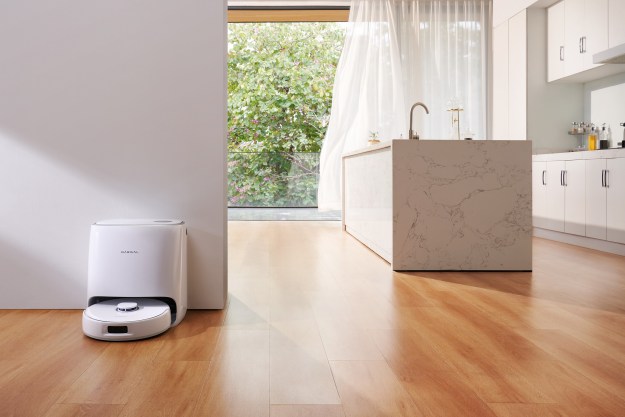A few years ago, Inder Singh fell seriously ill with an infectious disease. Though he routinely traveled to developing countries as part of his job as Executive Vice President of the Clinton Health Access Initiative, he hadn’t left the U.S. in several months. A second round of antibiotics failed to cure him, and in his desperate, fevered state, Singh started posting on Facebook to see if anyone else was suffering from the mystery illness. Maybe he’d gotten it from one of his friends, who could give him some advice on how to get better.
His queries came up empty.
“I realized I had zero access to information about the health situation around me,” he told Digital Trends. “We were in the dark ages.”
Part of his work at the Health Access Initiative involved brokering deals to cut the price of AIDS and malaria drugs to get them in the hands of populations who needed the medicine but couldn’t afford it. It was rewarding work, says Singh, but he was growing frustrated. “The world spends hundreds of billions of dollars — nearly a trillion dollars — trying to curb or stop the spread of communicable illness, and it does so with terrible information about where and when disease is spreading,” he says. “How do you allocate money effectively if you don’t know where it’s spreading?”
Not long after he recovered from his illness, Singh left his VP post and started Kinsa. It was born of the twin frustrations of his sickness and the lack of insight into how disease spreads. With that in mind, Kinsa launched a $30, FDA-cleared smart thermometer. It doesn’t use batteries and has no LCD screen; instead it plugs into your smartphone’s headphone jack and displays your temperature in its accompanying Android or iOS app. From there, you can email the information to your doctor or pull out your phone at her office to show the history of your fever.
Related: Mitsubishi wants its smart home to sense your health and mood

This is just a streamlined version of what’s already happening inside schools, says Singh. One of the first things a parent does when little Nicky starts coughing is call Robbie’s parents to see if he’s sick, too. It helps them determine whether a sore throat is just a sore throat or the start of strep, for example. Future upgrades will allow users to create their own communities, like a playgroup or office. (That could come in handy. If 30 percent of the Digital Trends office reports a cough and chills, we’d probably take a preventative sick day.)
When we tested out the Groups feature, it pulled in our (faked but very serious) illness data, updating the number of illnesses and which symptoms we were feeling. The “Health Status” goes up and down, depending on the overall ratio between the population of the group and its sick members. When we typed in a comment about our illness, it automatically showed us as “anonymous,” though we could’ve changed our name if we liked.
In fact, all of the data sharing is anonymous, unless parents choose to include their name in a post. “We’re not sharing much. We’re just sharing very basic information about the level of illness, how many people have some sort of symptom or some sort of fever, and what common symptoms are going around,” Singh says. While he admits the idea of sharing health data can cause a bit of an “allergic reaction” in some, Singh adds that once people see the value in the product, it allays their fears. “We’re not telling you who’s sick; we’re not telling you anything like that. It’s just simply an aggregation of information.”

He adds, “Many people who are trying to take data from sensors about people, they’re trying to understand the individual. We’re not. We’re trying to understand the population. What we care about is not your individual data, necessarily; it’s the population trends.” Unlike an HIV diagnosis or a blood-pressure reading, there’s nothing personal about a fever, he says.
Still, he does actually want the Kinsa thermometer to have a bit of a personal touch. “I feel like calling it a thermometer undercuts its value in many ways, because it does so much more, “ says Singh. “We want to take it from a very traditional product that gives you a number readout to being able to give you the comfort, reassurance, guidance, and context you need when you first fall ill.”

Getting to that point will take widespread acceptance of the Kinsa thermometer. If that goes well, Singh wants its software in all sorts of medical devices. “In 10 years, I hope that there are millions of products all over the world that are using Kinsa software, where we’re able to do real-time sensing on populations’ global health to understand the spread of illness. I hope that we’re able to inform not only individuals but also important public health actors who can help address those issues: the U.S. Centers for Disease Control, the World Health Organization. I hope that we’re able to provide individuals with guidance about what they should do to get better faster.”
In an ideal world, says Singh, Kinsa would be an important part in stopping the spread of disease — by keeping people from getting sick in the first place.
Editors' Recommendations
- Here’s why you should consider upgrading to a smart thermometer
- OxeFit XS1 tracks your workout form and suggests real-time improvements
- Weather alerts may be the smartest use of smart lights. They can save your life
- Straight flush: How next-gen smart toilets could revolutionize health tracking
- Smart speakers may soon be able to keep tabs on your infant’s breathing


